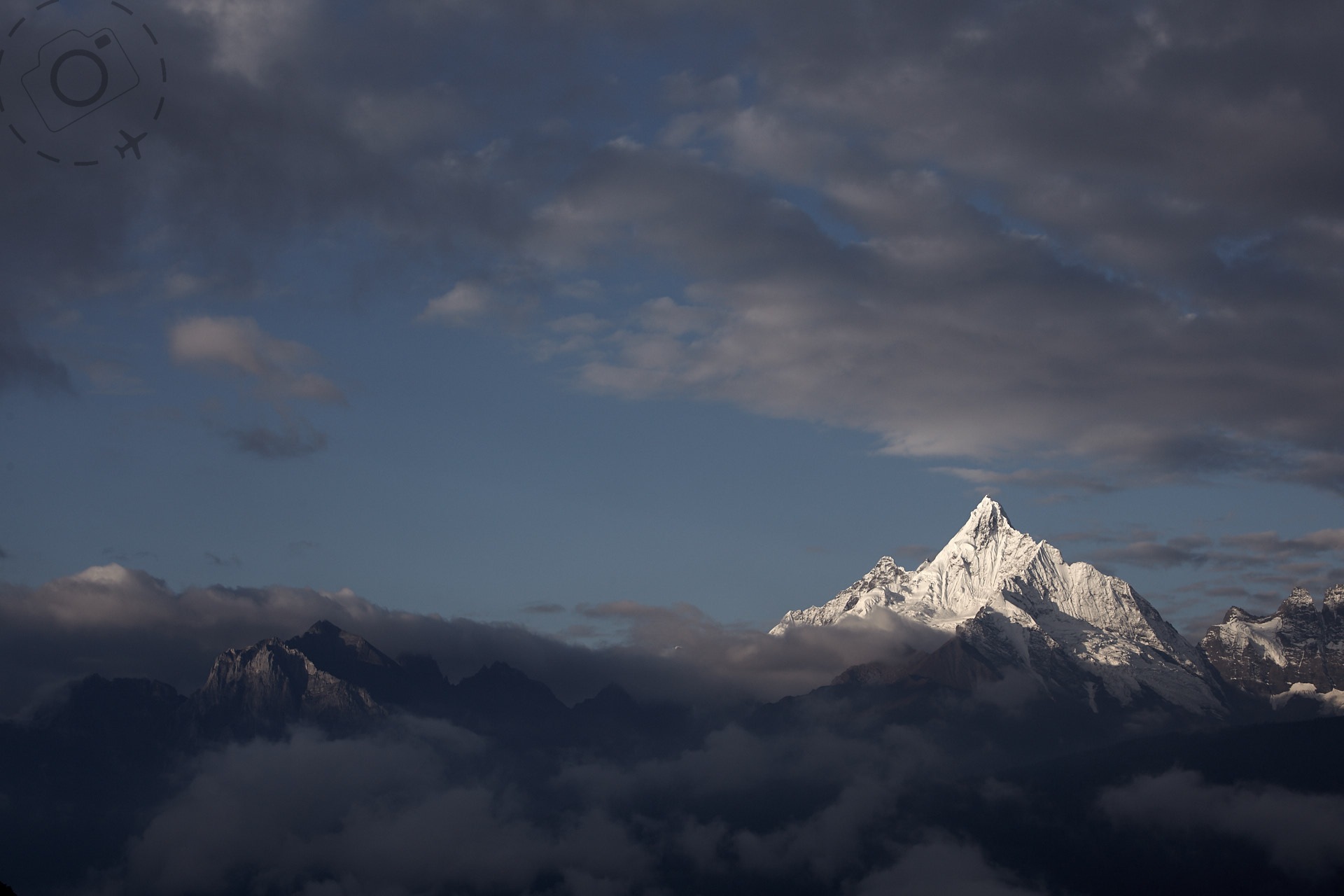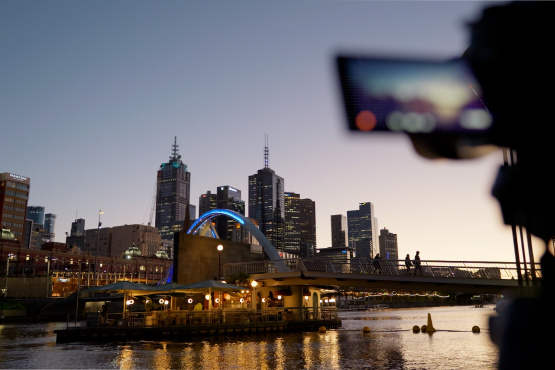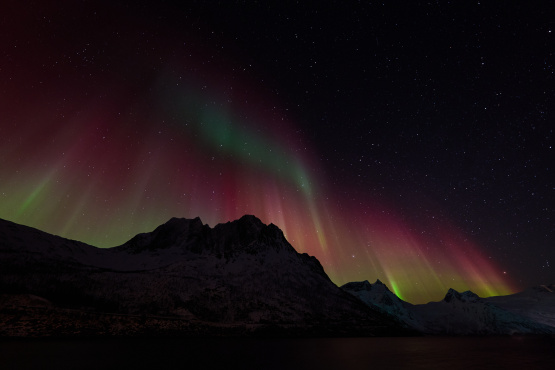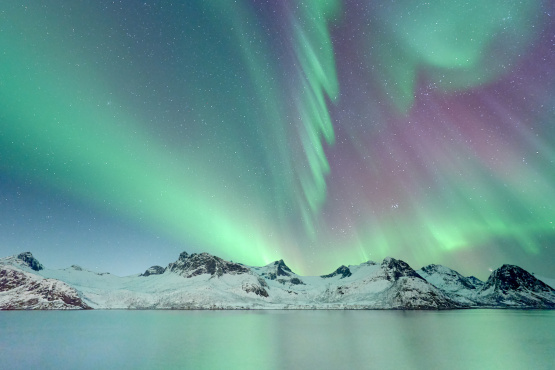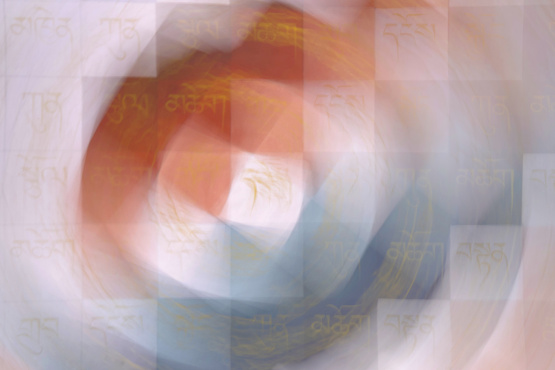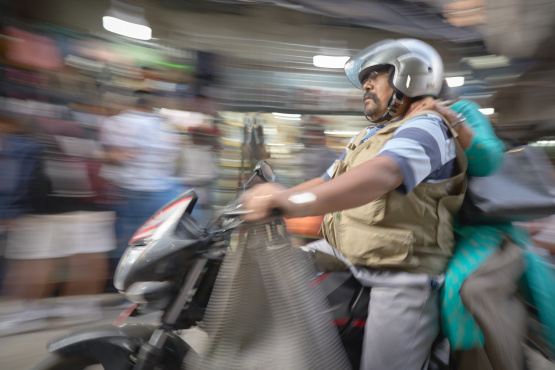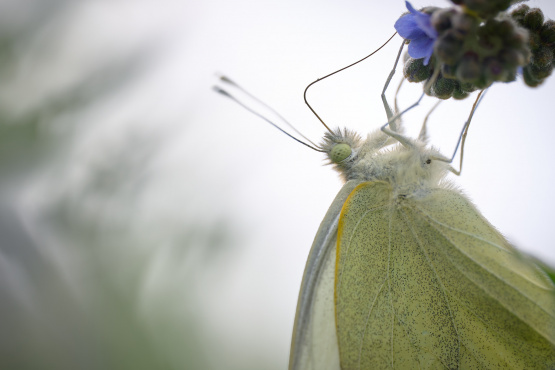CLOUD BUSTING
At 7:14 in the morning the first rays of golden light struck the highest peak of Meili Xue Shan. A collective sigh went up from the hundred or so people gathered in Feilai Si to watch the moment. The shutters went crazy, mine included. Over the next 30 minutes I put over 100 frames onto my memory card and watched a dozen people around me do the same. A few film fanciers had to reload their cartridges. It was a special morning. I can't tell you how often the Meili mountains put on a decent show, but I can tell you it's worth a shot if you ever find yourself in the far north of Yunnan province.
The town of Feilai Si was hidden from the sun itself until later in the morning, but the massive peaks of Meili Xue Shan were not. Golden light illuminated the peaks for the first 7 minutes, after which the warmth receded a little. Within 15 minutes of the first direct light the mountains are well lit in strong light. Another 10 minutes later and the colour had cooled off completely as the clouds began to build. Sunlight has that unfortunate property of heating the landscape and causing atmospheric changes. By 8am the peaks were hidden beneath a billowing blanket of fluffy white clouds.
The rest of the valley was clear and sunny, just the lovely views of Meili Xue Shan and its peaks had disappeared.
Clouds were a fascinating ingredient to this experience. I woke up a few times during the night and peeked out the window to see what was happening.
The sky was constantly changing. This is typical of the Kham Tibet regions, where altitude and the elements combine in unpredictable ways. In the moonlight I could see a layer of clouds over the peaks before dawn. At 6am the moon had gone and so had the clouds. By 6:30 the sky was bright enough to shoot very slow exposures (30 second shutters) and extract some of the pink hues of pre-dawn. A few whispy clouds still roamed across the valley in front of our peaks when the first rays of direct light emerged, but they moved quickly enough through the vista to allow for varied compositions.
My accommodation was the Feilai Si Hotel, an over priced and under serviced hotel that does have an excellent rooftop for fans of the view. If you want to shoot slow shutters you'll need a full-length tripod. I only had my mini with me, not being an avid fan of travelling with a tripod, and the short legs were foiled by an obstructing wall designed to ensure people didn't tumble off the top by accident.
That said, when the suns first rays hit the peak I was shooting at 800ISO and a minute later 400ISO so could take my shots handheld. I got great value from the 70-200mm on a full frame DSLR, but for partial frame you'll need the 35-80mm range instead. My wide angle was generally too wide to compose anything of interest. The colour hitting the mountain peaks was compelling for inspiration but lacking for composition. I was most satisfied with a little telephoto in this instance.
DRIVING ROUND THE MOUNTAIN
This was my third trip to Kham Tibet, and I wanted to make an effort to get a taste of the dramatic landscapes that the region is famous for. Much of the promotional material on display for Zhongdian (renamed Shangri-La by the Chinese) features the impressive peaks of Mei Li Xue Shan. In reality the only views of these mountains are long way from Zhongdian, within a different county in fact.
I first read about getting there in the Rough Guide, which points out that you can take a public bus from Zhongdian to Deqin and then get a taxi to cover the additional 30 minute drive. The roads close to Deqin were being upgraded when I visited, so they varied from single lane mud channels to two-way dust bowls. Slow going to say the least.
I chose to rent a van to have a private driver for the trip. I had help from a local guide to arrange the driver and a hotel which meant I could make stops on the way as they suited me and I would be driven directly to my accommodation. Normally there are lots of rooms at Feilai Si, too many I suspect, but my visit coincided with the national holidays and it was essential to book ahead.
The drive peaks at 4300m so be careful if you suffer from altitudes. Scenery does offer some highlights en-route, such as the stunning views of the upper reaches of the Yangtze (which will soon have a viewing platform and a fee to enjoy that view), a monastery stuck on a cliff-top (which costs 30Y to enter) and a few charming little towns set high above the valleys. The best photo stop is closer to Deqin when the views of Baimang Xue Shan leap up in the distance.
The light on Baiming Xue Shan is preferable in the mornings so an early start to the drive is a good idea.
There are plenty of drivers offering services if you head to the bus stop at Zhongdian's Old Town (Du Ke Zong). The 4WD vehicles cost around 500 yuan per day, but note that if you spend two nights up there you have to pay for the three days. Mini-Vans are more competitive for price and I with the help of my local guide I rented a driver and his slow little van (room for luggage and three people in comfort) for 400 yuan to get there and 400 yuan to get back two days later.
WHEN YOU GET THERE
The name of the town means Feilai Temple, but the spiritual origins of the town have been over-run by Han style hotels. Feilai Si is an overnight stopping point for tour groups heading for trekking in the snow mountains. Large buses roll in during the late afternoon and roll out again after the sunrise.
In substance the town is little more than a narrow strip along the road that faces the mountains and the vista. The Chinese have erected a new viewing platform to organise the sunrise event and collect fees. A large wall blocks off the view from the road as you walk through town, but you can walk lower down the road where the road ends and take photos without any problems. Rooftop views are just as rewarding and a little easier to reach after staggering out of bed so early.
Nobody speaks English in the town. You may wish to consider arranging a local guide to join you from Zhongdian if you don't have a few basic Mandarin phrases to help you check-in to the hotel. Delicious food is all over the town so you wont starve, and 'Once upon a time in Meili' also have English menus, good food and hand out free maps of the regions trekking trails, with towns named in English and Mandarin.
SNOW MOUNTAIN HIGH
3400m at Feilai Si is no problem if you've been properly acclimated to the altitude. This is not a trivial thing, please don't take it for granted. On the drive up I saw countless Chinese people vomiting at the side of the road, and still more ill and unwell in Feilai Si itself. The key is to take it slowly. Start by spending two days at 2500m such as Lijiang, then spend a few more days in Zhongdian at 3200m to allow your body to adjust to the demands of the thin air.
The drive itself makes a high pass at 4300m, but quickly drops back down to 3000m at Deqin. The constantly windy road with sudden switchbacks and steep gradients is what does in those people who get sick.
POST SCRIPT
I stayed in FeiLai Si for a second day but the next sunrise was a bust. By 6:45am there was enough light to make out the extent of cloud coverage. Not only was there a lot of clouds moving across the Meili mountains, but low cloud covered the east horizon as well. The valley between Meili and Feilai Si was hazy too, all round a grim morning for photography.
I did wait for a while after sunrise and one section of peaks caught enough light to get a few shots. It was unique light that gave one peak high contrast light while dropping the rest of the scene into a soft and moody setting. So the morning was not without success, but was a fraction of the first day. This is why one night in any location is not enough, and even two nights wont always guarantee you success.
Dedicated landscape photographers wont be surprised to read this, as nature's studio is unpredictable and demands great patience to get the right shot. As a travel photographer I find I can learn a lot from the diligent craft of the landscape artists.
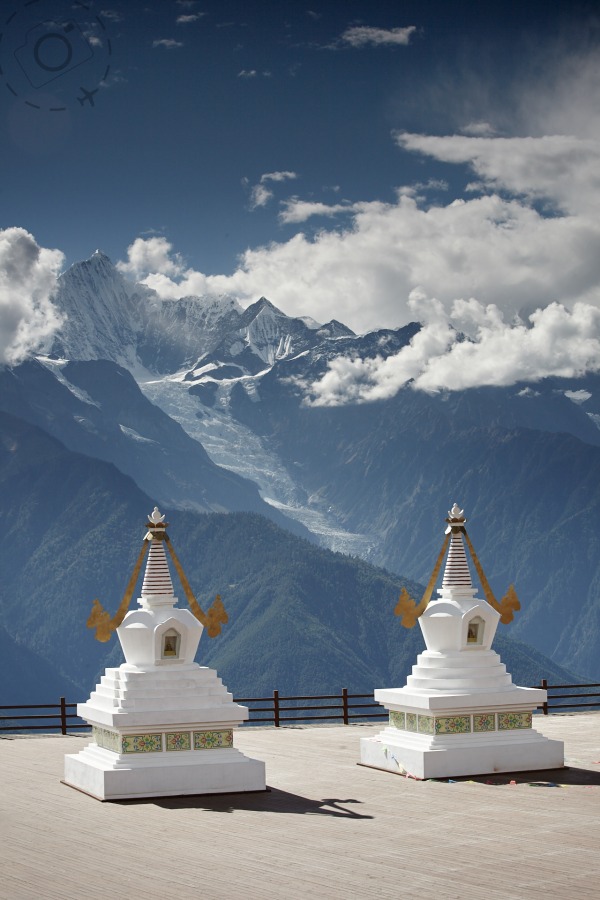
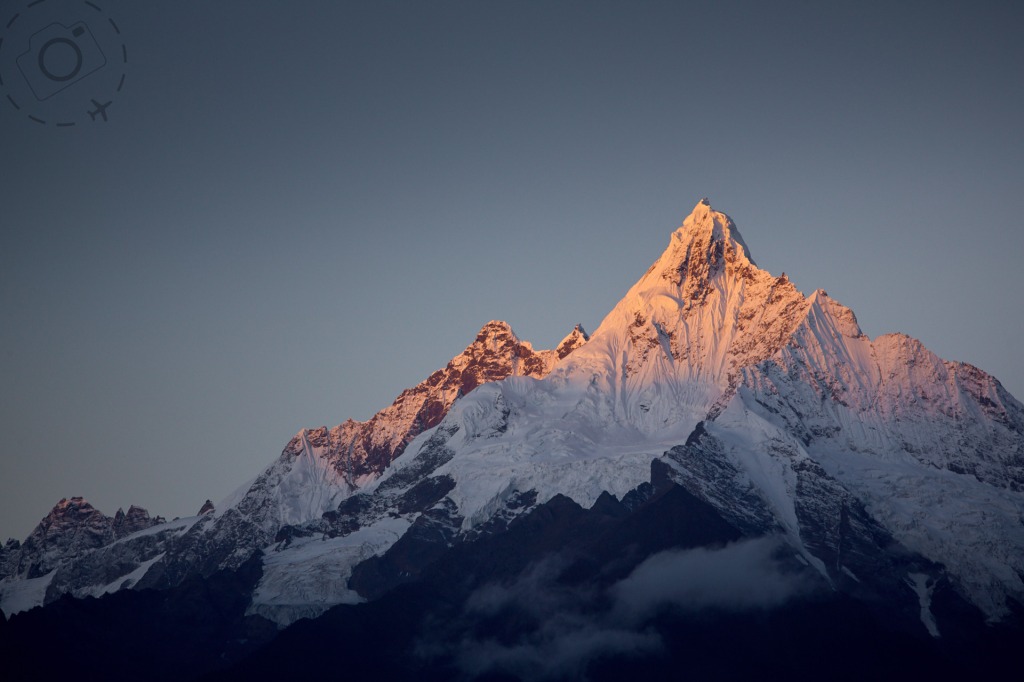
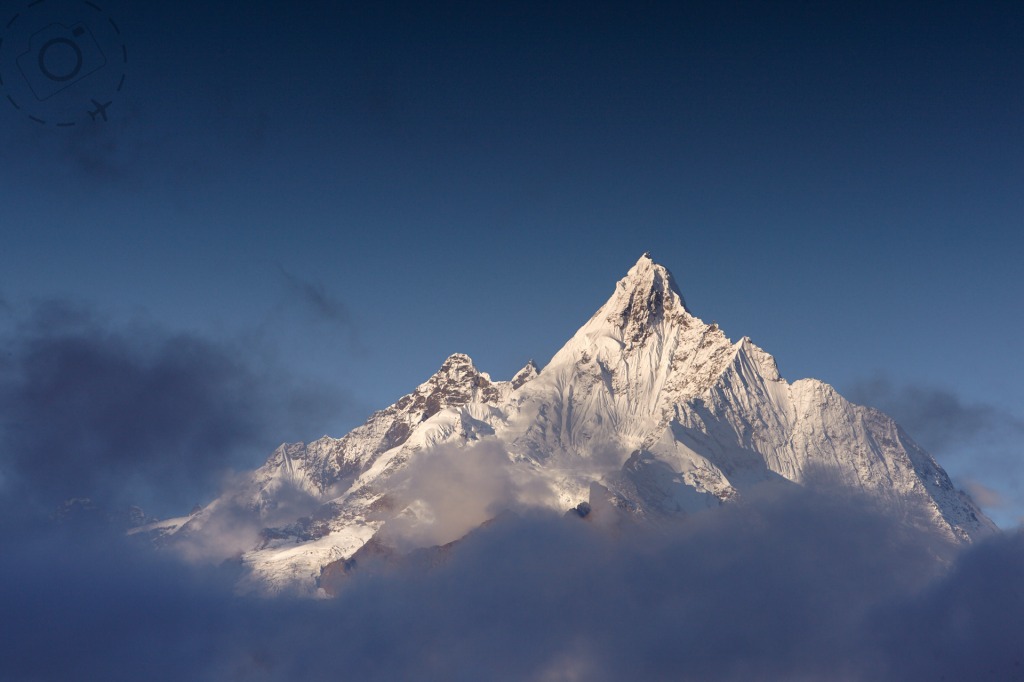
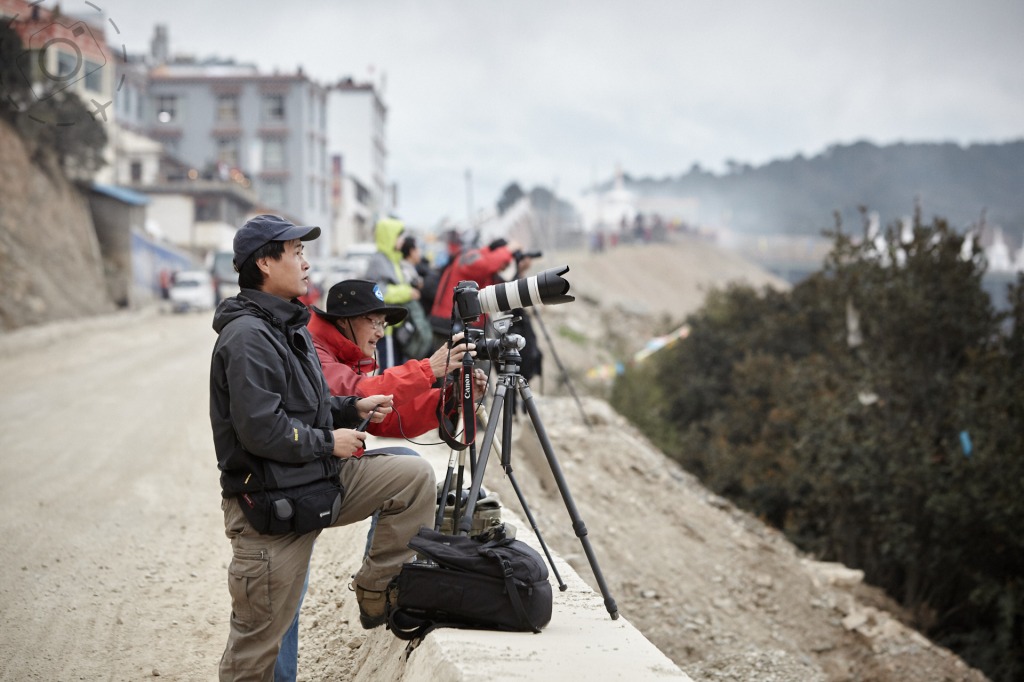
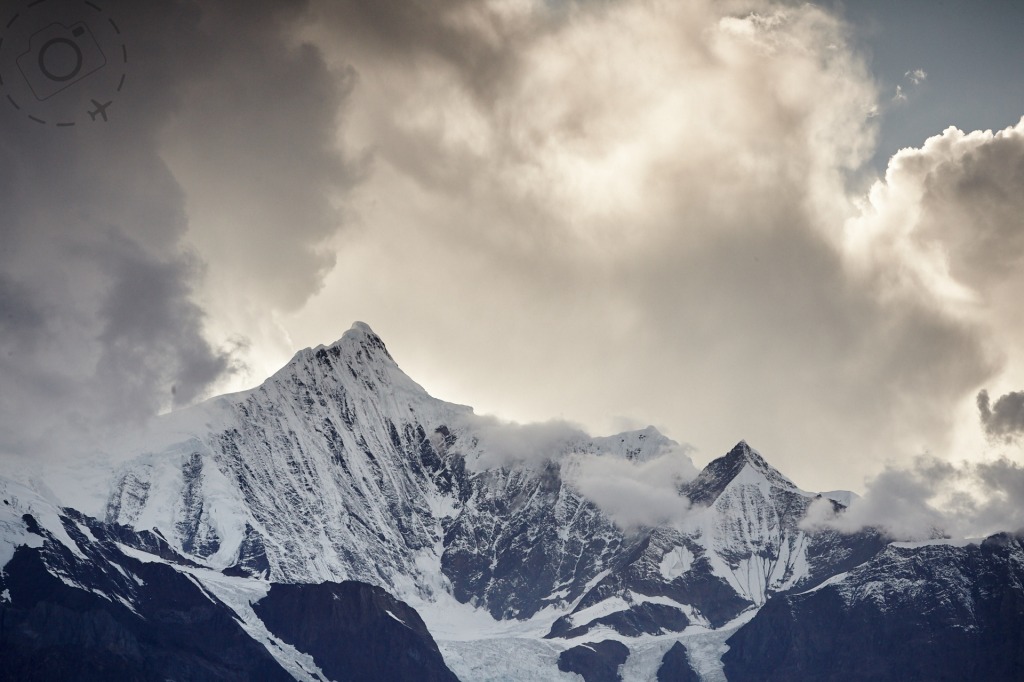

Keep Reading
Join Ewen's newsletter for monthly updates on new photography articles and tour offers...Subscribe Here

